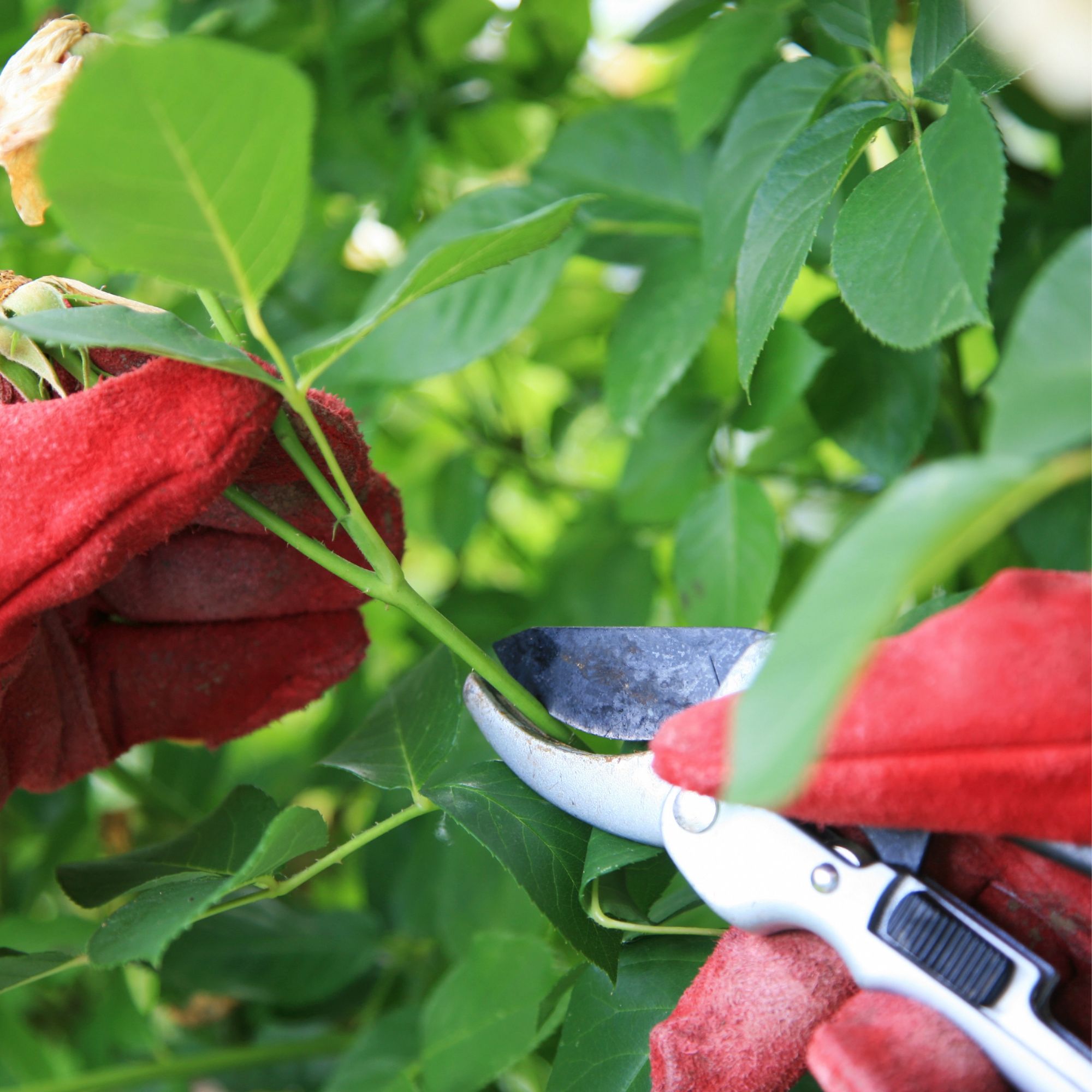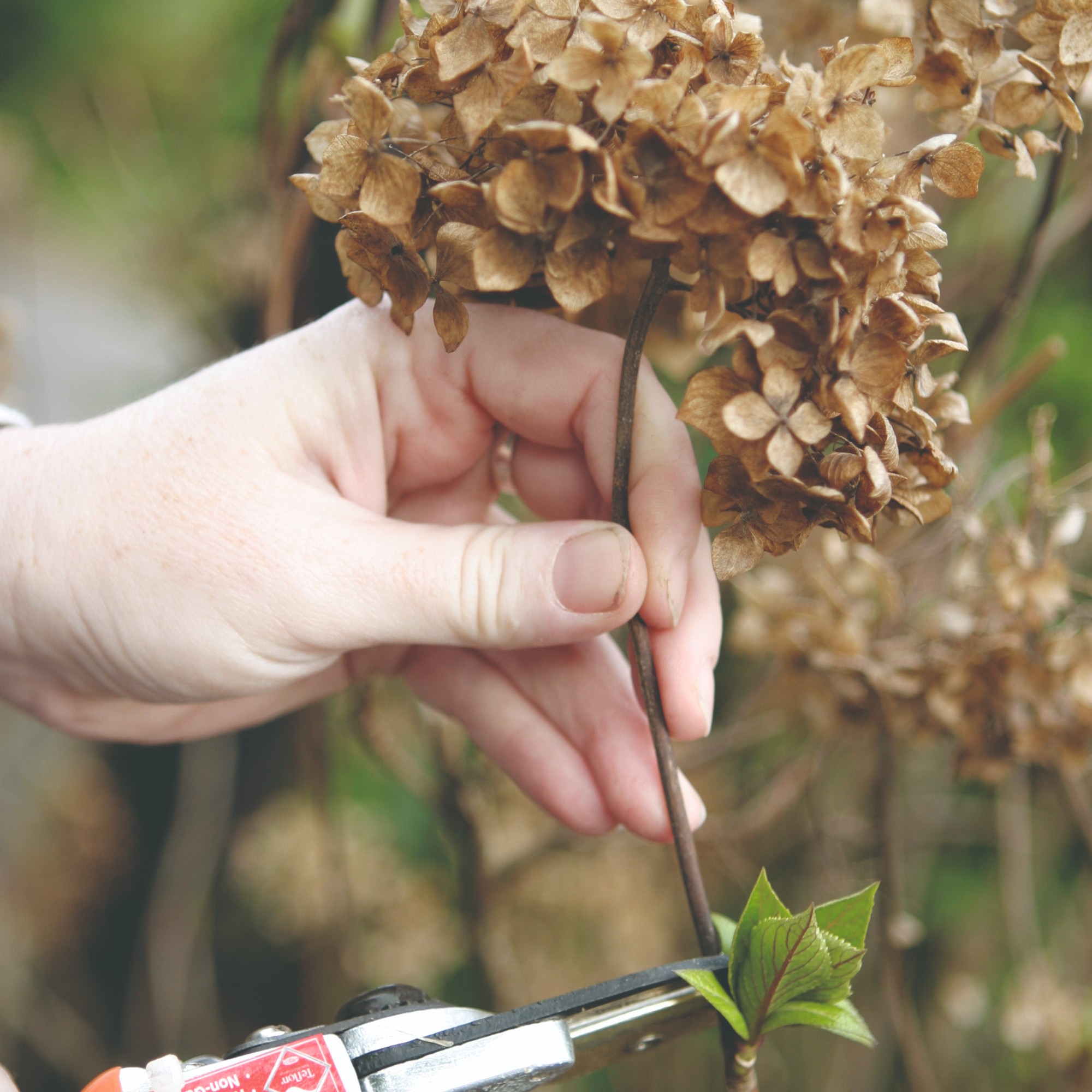
Even the most green-fingered gardeners will tell you that ‘winging it’ goes a long way when tending to your garden. But while trial and error can indeed lead to a happy and healthy garden, you still need to understand some key processes - like whether pruning is the same as cutting back.
Of course, no garden would be complete without maintenance. You need to keep on top of the shape and health of your plants, whether you’re looking to maintain the blooms in your garden borders or the privacy trees blocking out your neighbours. Pruning and cutting back can help you with that.
But is pruning the same as cutting back? As Morris Hankinson, managing director of Hopes Grove Nurseries, explains, ‘Many terms in horticulture are used interchangeably, but they often do have differences, so it's useful to know that pruning and cutting back are similar but not the same.’ So, this is what they both mean - and how to choose the correct option for your garden.
What is pruning?
Just as there’s a difference between pruning and deadheading, there’s also a difference between pruning and cutting back. In short, pruning is normally undertaken for a specific reason.
Tony Williams, estates manager at Mount Ephraim Gardens, explains further. ‘Pruning refers to the selective removal of certain parts of a plant, such as branches, buds or roots, to improve its health, growth, or appearance,’ he says. ‘It is done with a specific purpose, like removing dead or diseased parts, encouraging better fruit or flower production, or shaping the plant.’
In fact, pruning camellias encourages bigger and better blooms next year, and pruning magnolia helps to prevent this vibrant ornamental from growing out of hand. If your rose plant is experiencing one (or more) of the common rose problems and diseases, pruning can also keep it alive.

The window to prune is also quite wide. ‘Pruning can be done at any time of the year, but it is usually done in spring and winter when the plant is dormant,' explains Angela Slater, gardening expert at Hayes Garden World.
For example, when you prune shrubs, it depends entirely on your type of shrubs. In most cases, however, you should prune shrubs in the spring to avoid damaging the plant during its active period.
When pruning, it’s also always a good idea to clean your garden tools (especially if pruning a diseased plant) and sharpen your secateurs to ensure a clean and quick cut.
What is cutting back?
As pruning isn’t the same as cutting back, it’s always handy to know what cutting back is - and when you’d need to do it.
‘If you are cutting back, you will be removing much more plant material to improve the health overall,' says Morris. 'So, for example you might prune a hedge by tidying it up to keep it neat and tidy, and this will also keep it looking nice too. But if you need to be cutting it back, you are likely to be cutting back larger sections, such as branches and taking height out of the hedge.’
This is often done for more cosmetic reasons, like if you choose to cut back lavender because you’ve noticed some of the stems becoming too woody. Or if you want to cut back evergreen shrubs because they’re outgrowing their designated growing space.

The timing to cut back your plants is also slightly different to pruning your plants, as you also have the chance to do this during the winter months - which is why cutting back can be added to your list of gardening jobs to do in December.
This is echoed by Angela, who says, ‘Cutting back is done when the plant is dormant in early winter or early spring before it starts its new growth cycle.’
So, the biggest differences between pruning and cutting back are your intentions and how much you cut off the plant. You’ll still use the same tools, though.
Marta Williams from Cotswold Botanical sums it up perfectly. ‘Pruning is more precise and targeted while cutting back tends to be more about reducing the plant’s size or encouraging new growth through heavier trimming.’
Whether you're pruning or cutting back, you'll need a good set of secateurs to get the job done.
To ensure a quick and clean cut or prune, you'll need a sharpening stone. Always wear gloves when doing this.
Before snipping your plants, you should always clean your secateurs. If not, you may expose your plants to disease.
FAQs
How much of a plant can you cut off?
Ultimately, this all depends on the type of plant you are looking to cut back, as some plants are more tolerable to this task than others.
Most experts would advise that you never cut off more than ¼ of the plant during one session, though, to prevent damage and stress. If you cut off any more than that, you may find that your plant struggles to regain its strength and may not grow as much the following year.
In extreme cases, cutting off too much can also kill the plant. So, less is more. And you can even cut off some more a few weeks later if you feel the plant still needs tidying.
Do you prune above or below a node?
One of the biggest pruning mistakes you can make is pruning below a node, as you should always prune just above a node - which is where new growth appears. If you cut below a node, you may find that the plant suffers from dieback. It can even result in disease, which could be fatal.
By pruning just above a node, you will give the mother plant a chance to regrow and put all of its attention into this new growth. This will ultimately result in a bigger and bushier plant.
So, there you have it. Pruning isn’t the same as cutting back.







